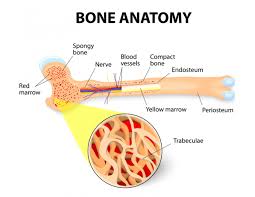
Recently Diagnosed or Relapsed? Stop Looking For a Miracle Cure, and Use Evidence-Based Therapies To Enhance Your Treatment and Prolong Your Remission
Multiple Myeloma an incurable disease, but I have spent the last 25 years in remission using a blend of conventional oncology and evidence-based nutrition, supplementation, and lifestyle therapies from peer-reviewed studies that your oncologist probably hasn't told you about.
Click the orange button to the right to learn more about what you can start doing today.
- You are here:
- Home »
- Blog »
- Multiple Myeloma »
- Myeloma – Calcium – Imaging – Bone Health
Myeloma – Calcium – Imaging – Bone Health

Managing your bone health is a life-long endeavor for the newly diagnosed myeloma patient. The diagnostic test measuring the calcium in your blood will be central to this job
Multiple Myeloma is sometimes referred to as a bone cancer. This is because the patient’s bone health is often a problem for the newly diagnosed patient. Monoclonal proteins (MM itself) can dissolve bones. The diagnostic signal that your bone health might be in jeopardy is your serum calcium.
According to research, more than 90% of myeloma patients experience bone damage at some point during their lives.
This post is focused on bone health in the lives of myeloma patients and survivors. That is to say, this post outlines the diagnostic testing used to monitor your bone health and illustrates both conventional and evidence-based non-conventional therapies to enhance bone health.
Bone Health- Imaging
In addition to measuring the amount of calcium IN your blood, oncology has gotten pretty good at imaging your bones as well. It has only been recently, say the past dozen or so years, that newly diagnosed myeloma patients can actually peer under the skin and muscles to “see” the condition of the bone.
When I was diagnosed with myeloma in 1994, the standard type of imaging your bones was x-rays. Positron Emission Testing scans were being tested for use in multiple myeloma and Magnetic Resonance Imaging (MRI) and Computer Tomography scans were not yet being used for monitor myeloma.
Imaging for myeloma offers real strengths and weaknesses.
Bone involvement at diagnosis is an prognostic indicator for the newly diagnosed patient. Experience and research as taught me that the bone imaging is not the same. Meaning, myeloma patients don’t always want to undergo full body CT scans and the most expensive types of scans are not always covered by your health insurance plan.
- Bone Imaging Can Make Or Break Multiple Myeloma
- Best Imaging for Detecting Bone Involvement
- Lytic Lesions Increase Risk of Death in Multiple Myeloma
Bone Health- Conventional Therapies
As of the writing of this post, the only two types of bone strengthening therapies tested and FDA approved for use with multiple myeloma are bisphophonates and denosumab.
Both types of therapies cause considerable side effects and have limited efficacy. The main reason for using either of these therapies is that the reduce skeletal related events comparatively quickly.
- Myeloma Imaging – “MRI with Contrast” Gadolinium Spurs Myeloma?
- Myeloma Diagnostics – X-Ray, CT, Radiation
- Myeloma – Bisphosphonates, Osteoporosis, Heart Damage?
- Multiple Myeloma Bone Health – Denosumab vs. Bisphophonates
Bone Health- Non-Conventional Therapies
Enhancing your bone health is a lifelong effort. Please believe me when I say that you are not going to want to take conventional bone hardening therapies for long after you’ve been diagnosed with multiple myeloma.
The answer then, is evidence-based, non-toxic, non-conventional therapies shown to build bone mineral density aka bone health.
- Myeloma Therapy – Non-Toxic Bone Health
- Myeloma – Bone Health – Probiotics
- Healing Bone Loss in the Myeloma Survivor
- Myeloma Bone Therapy – Cissus Quadrangularis
- Multiple Myeloma Therapy – Magnesium, Bone Mineral Density
- Muscle, Bone, Protein and the Myeloma Survivor
All myeloma survivors should pay attention to their blood calcium as well as imaging studies in order to manage their bone health for the rest of their lives.
To learn more about your multiple myeloma prognosis click now
To learn more about diagnostic criteria for myeloma click now
If you have any questions, scroll to the bottom of the page and post a question or a comment. I will reply to you ASAP.
Thank you.
David Emerson
- MM Survivor
- MM Cancer Coach
- Director PeopleBeatingCancer

